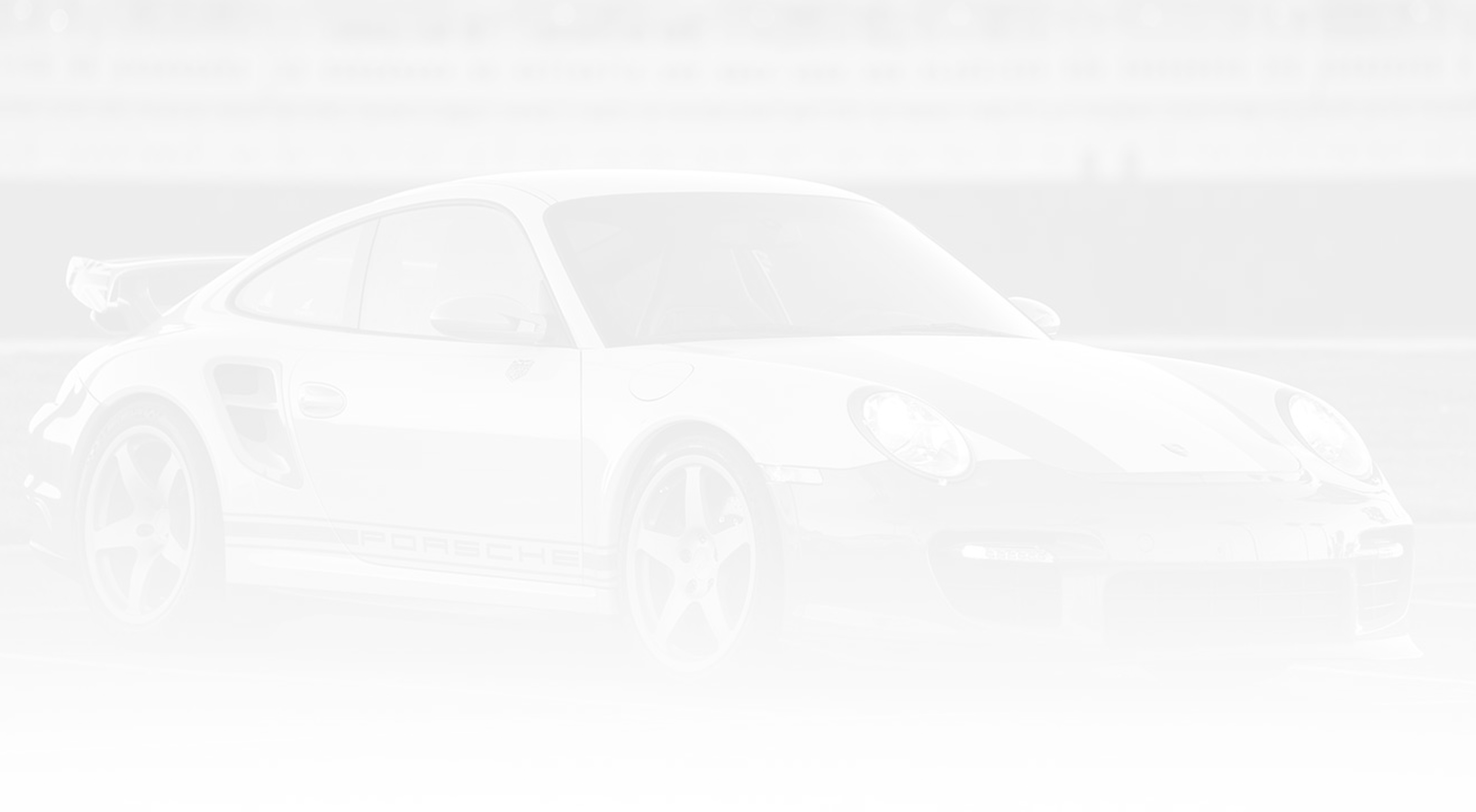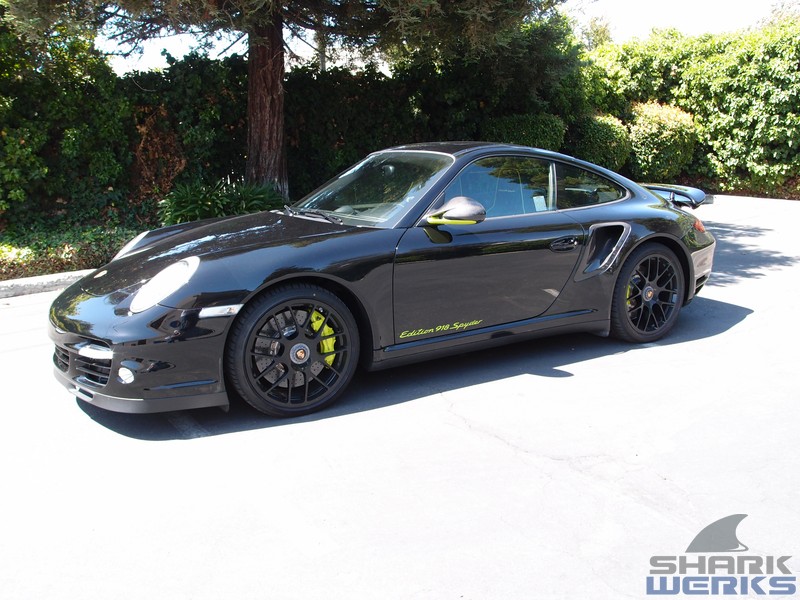
In 2010, the Porsche 911 Turbo had another facelift and changes made to modernize the car. It may look similar at a glance to the 2008 997 Turbo model, but it actually had a number of improvements including a completely new engine (based on the direct injection 9A1 found in the 2009+ Carrera), optional PDK transmission, updated PCM (communications system, e.g. stereo) carried over from the 2009 model, and revised suspension. Porsche also introduced an "S" trim with more power, centerlock wheels, and ceramic brakes as a common option.
While the engine is not Mezger based (as the GT1 family engine found in the prior 997 Turbo) in terms of race pedigree and proven track record, it did offer other advantages such as reduced turbo lag, fewer parts, a wicked fast PDK transmission to replace the Tiptronic option, and better fuel economy. Driving both stock, you'd probably find the 997.2 Turbo was a big improvement than the 997 in several ways, especially with the chassis and electronics. Even so, in stock form the car tends to be a bit too soft, quiet and to some extent, boring for some people.
Very early in the 997.2 Turbo's life, our good friends over at Evolution Motorsports in Arizona scooped up an early floor model and began tuning the ECU, racing, and finding the limits of the chassis. Combined with our experience on our 2009 Carrera S project car (which shares much of the suspension with the Turbo), we had some good insight into all the ways to improve this new Turbo. Over the next few years, we tinkered and tuned the car to further optimize what Porsche had done from the factory and rolled this out onto customer projects as the new parts became available.

The EVOMS 997.2 Turbo Project Car
Exhaust
The exhaust was re-designed and is all new for the 2010 Turbo model. The new exhaust is modular in design which makes it easier to upgrade than previously. From the factory, the exhaust exits the cylinder heads' exhaust valves and into headers (A) on both cylinder banks, which feed the turbochargers' hot side (B), then into the separate catalytic converters (C), and into the single muffler at the middle of the rear bumper exit (D), and out via the tailpipes on both sides. The oxygen sensors take their readings before and after the catalytic converters (more on that later), and unlike the 996 and 997 Turbo models, the muffer on the 997.2 is now connected via sleeve clamps to the "cats", allowing you to easily replace just the muffler. On the prior 996 and 997 Turbos, the exhaust was a single piece, which made it much more difficult and expensive to change.
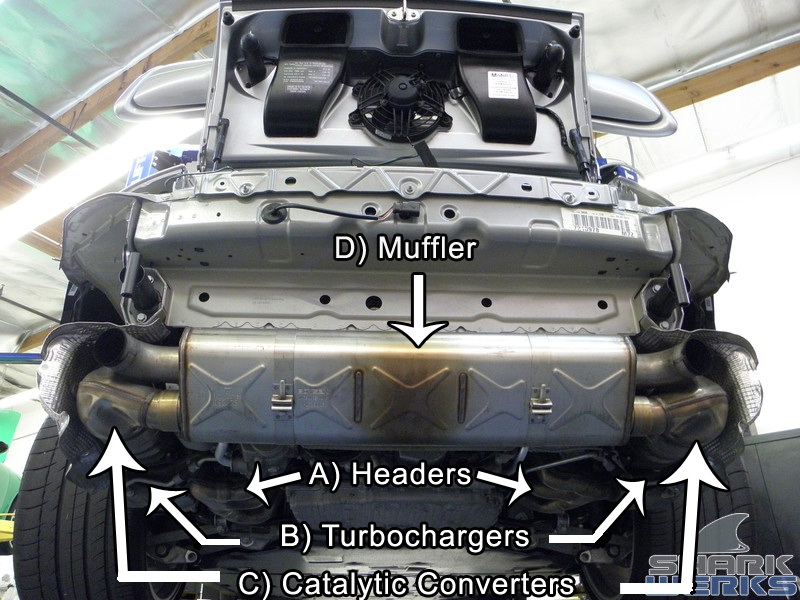
Muffler - The Low Hanging Fruit
Since Porsche handed us the muffler on a silver platter this time around, it usually makes the most sense to change it out when you want more sound and performance. With Turbo cars, the goal is generally to reduce backpressure, as throttle response and torque are functions of the turbo's output, and for raw power on a turbo car, a straight pipe from turbo to tailpipe will yield the most power. Of course there are trade-offs, and you would not want to do this on a street car (as you'd have a lot of pollution, check engine lights, exhaust drone, and some nasty loud sound).
We believed from the beginning that the low hanging fruit on this car was the muffler. Since the car is turbocharged with two catalytic converters, there's quite a bit of restriction in the exhaust flow even without a muffler to account for - and it isn't outrageously loud if you remove it entirely. So that's exactly what we tried:
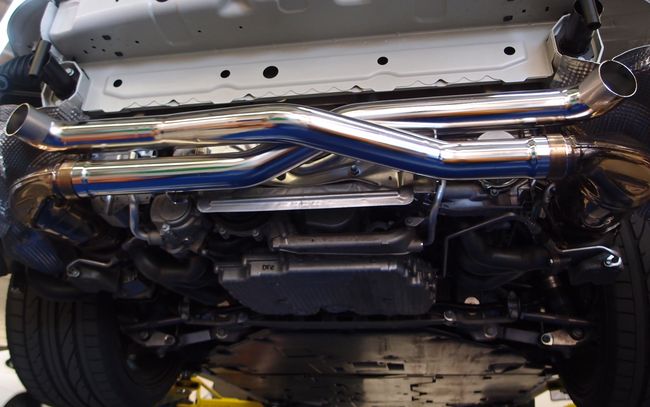
By removing the muffler, you accomplish a few things: You free up backpressure and allow the turbochargers to spin up quicker, resulting in better power at lower RPMs. You gain more power at wide open throttle once the turbos have spooled (you can hear the muffler restricting the exhaust flow when you open up these Turbo cars under boost), and you get a much more aggressive sound. You also remove a little weight from the car. And the best part is, if you do not change any other parts on the car, it's still tame for freeway use, daily driving, and even long road trips. You can make phone calls and have the complete Dr. Jekyll and Mr. Hyde personas.
This does give the car more bark and bite but it should be noted that a turbocharged Porsche will never sound like a NON-turbocharged Porsche or really any other car. The engine is a work horse, and will unfortunately never sound as exotic as a GT3, naturally aspirated Ferrari, or F1 car. Any manufacturer claiming their muffler or exhaust components will transform your car are probably not being truthful, and we recommend being careful with such claims. A regional Cars and Coffee or Rennlist group may help you discover and hear different exhausts in person, as videos never tell the whole story (though we try!).
We have tried Slip-On (muffler replacement rather than removal) exhausts such as the Akrapovic, but most of our customers found they simply weren't aggressive or a big enough change from the original muffler. Most people who wanted more change ended up replacing the headers or catalytic converters later, at a higher cost and with more risk for check engine lights.
Internally, the original muffler is quite restrictive. We opted for two CNC mandrel bent tubes to maximize exhaust flow, rather than an X-design that forces a "traffic jam" at the intersection.
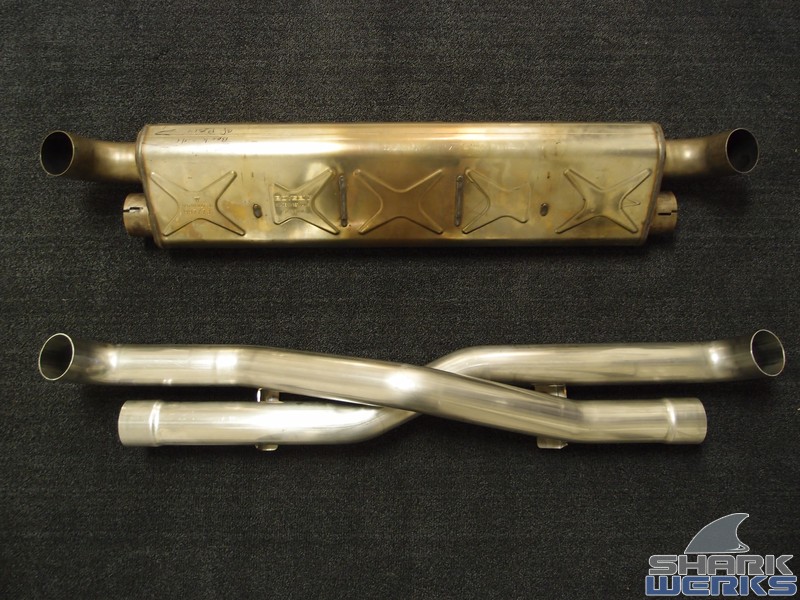
The result of bypassing the component is more sound and better performance but reasonable cruising volume and side effects:
More info on this product can be found here.
Muffler with Catalytic Converters
The next and probably most common option is a complete exhaust that replaces the catalytic converters and the muffler, such as the Tubi exhaust.
This was the only way to upgrade the exhausts on the 996 and 997 Turbo models, which had the "cats" welded to the muffler and no easy way to replace one or the other. But things changed on the 997.2 - a gift was given to us by Porsche, and we think it's more sensible to replace only the muffler rather than the cats or both, which costs three or four times as much money, is less reliable, and has modest performance benefits: If replacing the muffler with cats would add 30 HP to the wheels, you could probably gain 20 HP from the muffler alone for much less hassle.
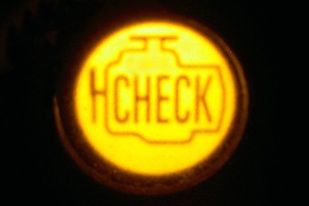
Additionally, replacing the cats on these cars is against USA Federal emissions laws, and high-flow cats tend not to be as reliable the OEM units (which also fail eventually). The result can be a check engine light on the dashboard...
That said, it's true that replacing the cats and muffler (with as free flowing options as possible) will give the most power and the best acceleration in events like quarter mile drag racing. Additionally, it adds another level of exhaust noise (for better or worse), more turbo whistling sounds, and faster turbo response. We just recommend being careful with such upgrades and checking local laws before going down that road.
High Flow Catalytic Converters or Bypasses
Much of what we said above applies to high-flow cats alone. Why spend much more money modifying something that will almost certainly cause problems when the muffler is right there and even easier to replace? If you wanted a very mild change in sound, you could change the cats alone - but most people find a muffler replacement makes more sense as its primary goal is to quiet down the car, not clean the exhaust. If a mild sound upgrade is in your desired mod list, consider a slip-on muffler replacement such as the Akrapovic muffler.
As for "cat bypasses" -- this is something we highly recommend avoiding. Your car will emit magnitudes more emissions, resulting in quite a nasty experience for the traffic and pedestrians around you. You will almost certainly have a check engine light, and it's highly illegal in just about every country in the modern world. With trends on vehicles heading toward electric and hybrids, you may demonize the enthusiasts and expedite our beloved Porsches to an early grave. Don't be temped by cheap cat bypasses! These cars were designed to have emissions equipment and run clean. They can make plenty of power and sound good while still accomplishing this.
Headers
Since the headers are the first component directing the exhaust to the turbochargers, it's often assumed that large horspower gains can be had from changing it out. Usually a header upgrade on a turbocharged car can help with turbo lag, but Porsche has done a great job from the factory on these cars. The jury is still out on what exactly an aftermarket header will offer for this vehicle (we have not seen independent dynos showing significant gains) but it does make sense that an upgrade could add performance at a relatively low cost. We will update this guide as we know more about the results from header changes.
Tuning and Performance Kits
Using what we had learned with EVOMS from the 997.2 Carrera models and its Siemens ECU with direct injection, we had the general idea planned for how to unlock this ECU. Using its project car, EVOMS in Arizona was arguably the first tuner to modify the ECU on a 2010 Turbo here in the United States. The results were like we had come to expect from tuning any Turbo car: more boost, more power, better throttle response, and reduced lag.
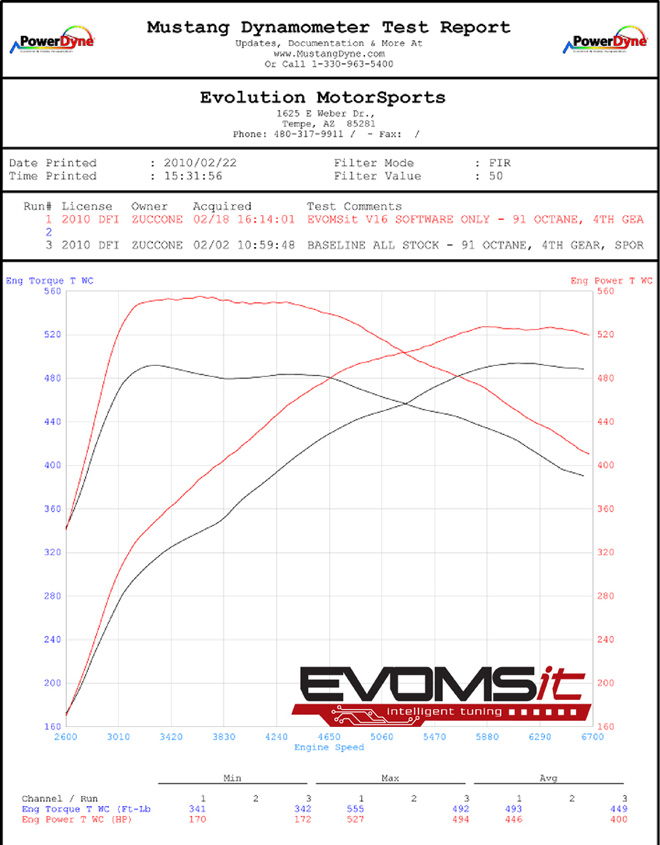
The gains we saw were as high as 65 HP at the peak delta and 60 ft-lb of torque, with the most noticeable gains from 3000-5000 RPMs.
Extensive testing was done in 2010 and 2011 with the EVOMS car, both in extremely high heat at Phoenix's race tracks and drag strips, and on various customer cars over the next several years.
Hundreds of cars later, we have accumulated extensive testing and verified the safety of this tune for long term use. The tuning does not disable the safety parameters such as knock sensor and O2 monitoring alone, that can protect the engine in troubling conditions, and the extra load on the engine and transmission will not cause extreme wear and tear of mechanical failures.
No single parts will ever add as much power as an ECU tune on these cars. It's the most effective way to add power.
More info on the tune is available here:
https://www.sharkwerks.com/software-tuning/p5339-evomsit-ecu-tuning-for-997-2-turbo-EVOF280
As a side note - We have seen PLENTY of 997.2 Turbos come into our shop now with higher mileage (50,000+) and original spark plugs. Whether you're planning to tune the ECU or not, if you find out your car has original plugs with this type of mileage, do yourself a favor and schedule to have them changed. The service interval might not say this, but we believe they should be changed every 25,000 miles for best performance.
Beyond 600 HP
The 997.2 Turbo can reliably and easily boost to about 620 crank horsepower with a tune and exhaust. But going beyond that is a tricky situation.
The turbochargers become the limiting power agent, as do the intercoolers. But when you upgrade these, you run into a new problem: transmission and engine problems.
We do not push these cars beyond 650 HP because we have seen (in EVOMS' project car) the PDK transmission slip and fail at these extreme power levels. We have not tested the manual transmission beyond those numbers, and as you approach 700 HP you run the risk of internal engine failures of the connecting rods. With a built engine, transmission, and supporting mods, going well beyond 600 HP is possible, but it's not something we recommend. We like to be sure our customers' cars are very reliable for years to come.
For more power than what we offer, we would recommend contacting EVOMS in Arizona directly.
Intake, Intercoolers, Diverter Valves, and Air Ducts
Intake
Some of the magic on this car is in the OEM intake system - the factory airbox receives a rush of air at all times while in motion and the box is very well designed. Adding cone filters or changing to carbon fiber might make the engine look nicer, but it's unlikely to add any significant power. The original system also does a great job avoiding heatsoak with its plastic walls and protected packaging. We do not recommend changing the factory unit, as most designs on the market we have seen will allow hot, horsepower-robbing air to be sucked in from the engine bay, which causes the intake temperature to climb and forces the ECU to utilize lower maps for less HP.
The OEM intake is designed to seal nicely against the decklid to provide cold outside air. It is not a major bottleneck in the car's powertrain and no aftermarket units we have tried proved to gain any horsepower on the dyno.
The one way to improve the original airbox is to upgrade to a higher flow air filter. While it will result in very minor power gains, it is incremental with other upgrades and you can usually hear the difference (which can be fun!).
We recommend the European BMC brand (available here), as K&N and others tend to have a bit too much oil on the element for our liking.
Intercoolers & Air Ducts
We apply the same logic to Intercooler upgrades as we do to Power Kits on these cars. The car is so dang fast - how fast do you need to go? And what other parts have you already replaced? The intercoolers could be upgraded for better performance, but would not be the limiting factor unless you're in a very hot environment and have already upgraded the turbochargers. And at that point you get into reliability of the transmission and engine. The PDK can do just fine with about 650 HP. After that, it becomes a liability. We do not offer parts to take you beyond this number due to reliability concerns with the drivetrain, so we do not offer intercooler upgrades for these cars. Upgrading the Intercoolers with stock turbos won't yield much increase in performance, if any at all, and it's usually very difficult to install these. If your goal is to go a bit faster, tune the ECU and exhaust.
The same logic applies to the air ducts. They simply are not restrictive enough up to even 700 HP to justify changing these components out. Then you get into engine and transmission reliability issues.
Diverter Valves
While the part compatibility is the same with 996 Turbos, the OEM diverter valves tend to work a bit better on these cars than the billet alternatives. We've found that the aftermarket units can cause check engine lights on the 997.2 Turbo (even when the same part does not on 996 Turbos) and therefore recommend stock parts. You should test or replace them every 50,000 miles or so to be sure they are not sticking or bleeding boost.
Suspension
The PASM suspension on the 997.2 Turbo is much improved over the previous 997 Turbo models, with stiffer shocks when wanted and even better compliance on rough roads in non-Sport mode. Most owners want to lower the car for aesthetic purposes or to lower the center of gravity with stiffer springs in order to help cornering performance.
DSC Controller Upgrade
On PASM based cars we've more recently added the DSC Controller Upgrade. This quickens the response time of the factory PASM module and also widens the range. A perfect upgrade for a stock ride-height car or even lowered.
Lowering Springs
Since the OEM PASM suspension works so well, we recommend only the TechArt Lowering Springs (sadly no longer available new) for these cars. This allows the Sport button to still work as intended, lowers the car about 20 mm, and gives tighter and more resposive cornering ability. The ride quality remains very compliant. For most types of driving and in city streets with potholes and steep driveways, these springs still do a great job., The effectiveness and life of the stock shocks will not be negatively impacted since TechArt made the springs with the OEM shocks in mind.
We do not recommend other brands of lowering springs. Some tend to sit too low, others sag over time, or offer a bouncier, rougher ride quality. TechArt have a nice ride quality that allows the car to be driven as intended, be it daily or for occasional track use.
If you are also going to be sticking with stock wheels and do not have centerlock wheels, with stock offsets, note that a lowered ride height will also cause the wheels to look more "tucked" in. Quite often a fix is to use a wheel spacer to "push" the wheel back outward towards the fender. You can view a selection of our wheel spacer kits here. For example with a TechArt spring kit we usually recommend a 7mm in front and 15mm in the rear. These do not work for cars with Centerlock wheels unfortunately.
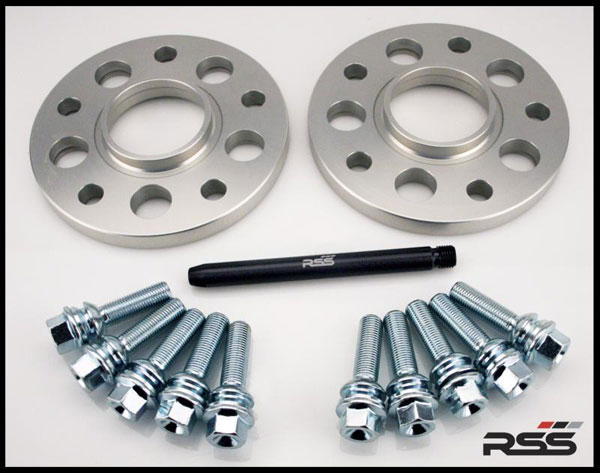
Coilover Suspension
The Bilstein Damptronic PASM Coilover kit (adjustable Springs and Shocks), which is commonly installed on PASM equipped 997 models, was not updated for the new DFI 997.2 Carrera S. Since the OEM system was updated, it seems like a bad move to "upgrade" to the older Bilstein kit, especially considering most people simply want to lower their car. It generally doesn't make for a very compliant ride and we do not offer it. For those of you looking for a streetable / compliant but adjustable coil over kit we have settled on the Tractiv Touring adjustable coil overs. This kit comes with an upgraded DSC controller and allows you to maintain the use/function of the factory PASM (whilst upgrading it at the same time to a faster response and wider range). Being ride height adjustable gives you the ability to set the car up to a desired setting (and change it later one etc..). Unlike most coil over kits, the magic in this set up is that it won't beat you up on slower-speed bumpy roads and gives the car a much more compliant ride in comparison to regulat shock/coil over kits.
At this point we do not recommend other coilover kits for these cars as well: among the options available on the market, no other works better for the street than the TechArt springs and original shocks from what we've found, and most are designed for racing applications (e.g. Ohlins or Moton). Unless you are building a full time dedicated track car, the extra adjustability of these coilover kits would likely be wasted, and the drawback of losing the PASM functionality and having a rougher ride on the street would somewhat ruin the point of this great street car.
Suspension Links and Toe-Steer
The upper rear suspension links (2 per side, 4 per car) on all 997 models feature neoprene bushings and are non-adjustable in length. The RSS variant adjustable links provide a long lasting, quiet solution to both of these problems by giving adjustable length and monoball bushings on either end. These bushings stiffen up the handling and feedback on the car, giving quicker handling response and more direct results when you turn the car. The adjustable length helps to set the alignment to factory or race specs on modified cars. More info: https://www.sharkwerks.com/product?id=4761
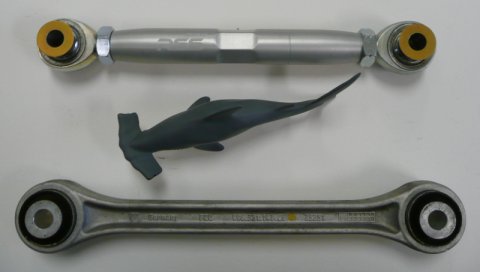
One other issue with the rear suspension is the toe-steer link, that directs the toe-in/out angle of the rear wheels under cornering. The RSS replacement Toe-Steer kit also includes a monoball inner bushing, giving further tightened handling and feedback as it replaces another neoprene bushing. The length is adjustable for toe adjustment on the alignment beyond factory and the locking plates ensure that the toe-angle does not swivel and change as the suspension arm travels up and down with bumps, unlike the factory piece. More info: https://www.sharkwerks.com/product?id=3943
Control Arms, Thrust Arm Bushings, Pivot Bushings
If you plan to track the car often, you will most likely want to adjust the rear negative camber and will want adjustable control arms in the front and rear.
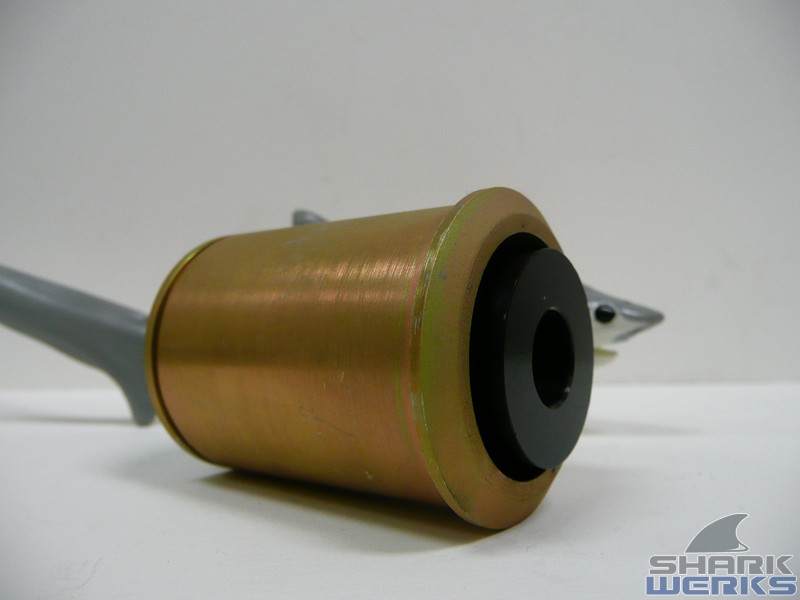
We recommend the RSS Tarmac Series Control Arms (https://www.sharkwerks.com/product?id=4420) for a couple of reasons: they're actually priced better than factory GT3RS arms and they also include steel monoball pivot bushings and aluminum thrust arm bushings. The factory arms have two locations (on either end of each arm) where Porsche opted to use a neoprene bushing, to quiet and dampen the street driving. The RSS arms hold up well with mileage (we have seen some with 30,000+ miles of mixed driving now) and are very quiet despite these metal bushings.
The result is better feedback and more direct handling; a stiffer setup that won't cause headaches and back pain from extra jolts. Yes, these parts are okay for street use and it's unlikely you'll complain about the extra noise, but the control arms probably have a larger effect on Noise, Vibration, and Harshness than the Upper Links and Toe Steer Kit above (if you plan to upgrade in stages).
An alternative is to replace the neoprene bushings in your stock control arms, but the OEM arms are not split-design on these cars, meaning you cannot fully adjust the camber. And due to the labor involved and the permanent nature of this modification, we find it's better, easier and cheaper to simply swap them out.
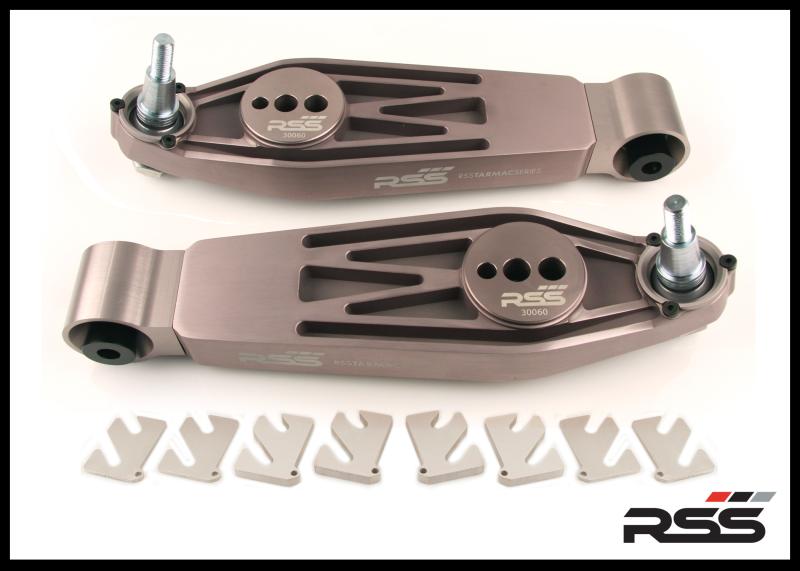
Sway Bars
The factory sway bars can be upgraded in order to reduce the body roll experienced while cornering on the 997.2. The sway bar is used to prevent the car from rolling, and a stiffer bar will stop the weight from shifting as much side-to-side (laterally) while cornering. The RSS bars are 3-way adjustable allowing you to dial in how much sway bar tension you require, to balance oversteer/understeer front-to-rear. There is no downside as far as noise or comfort lost by installing this type of part. We especially recommend this in conjuction with other parts, such as lowering springs and the links mentioned above.
For brand preference, we tend to like H&R -- which we do not sell currently. H&R has high quality bushings and good fitment. You can purchase these from Tire Rack.
Shifter / Cables for Manual Transmission Cars
The majority of the 997.2 Turbo and all Turbo S cars came with the PDK transmission option. The factory sport wheel design wheel came standard with plastic and somehwat numbing paddles. We offer a more immersive upgrage via the JQ Magnetic Paddle Shifter upgrade. The mechanism is much-improved and you no longer feel like you're just pushing a plastic button.

For 6speed cars we highly recommend using the factory short shifter kit or the more adjustable and precise Numeric Racing shift kit (we like to set that on the middle hole). We've used both for years and it's a matter of preference but for us the improved hardware and mechanism of the Numeric as well as the ability to adjust the throw gives it the nod. If shifting gears is your call then the addition of either of these two gives you less-throw and more precision. Similar to a GT3 and just how we like it. Unless you're doing a lot of track work it's unlikely you would ever break the factory shifter cables but should you need replacements Numeric Racing also has that covered. If you like the feel and throw of the factory unit it can the plastic mechanism can still wear out some and cause it to feel vague so we also use a bushing rebuild kit. Porsche sadly uses cheap plastic bushings and pivot connections utilized in the shifter assembly which wear out over time. Because these bushings require loose tolerances and free play to not bind, they generate sloppy shifter feel. Moreover, their plastic and rubber construction flexes excessively which causes spongy gear engagement, especially on cars that have accumulated wear and tear over the years. The retrofit kit is comprised of custom machined aluminum pieces, heavy-duty enclosed ball bearings, and hardware to entirely upgrade the factory shifter assembly.
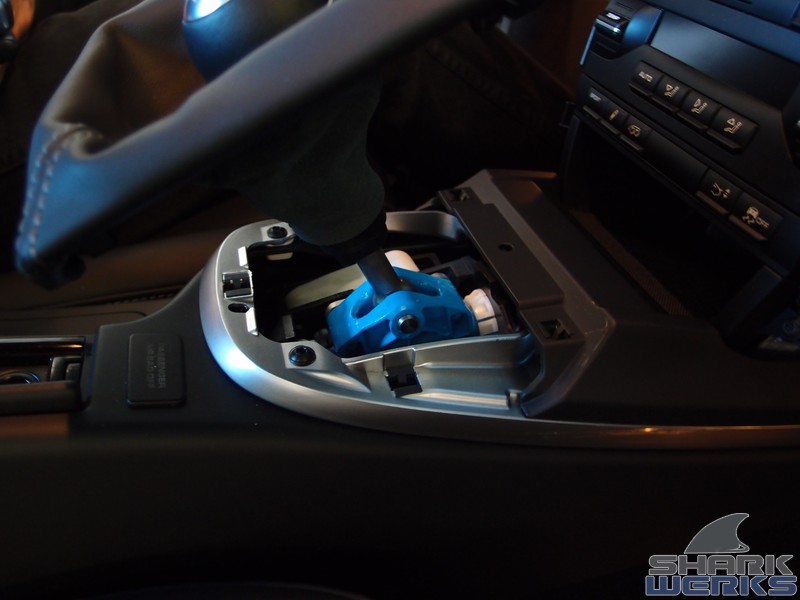
For PDK cars that already have the Sport Steering wheel with Paddles we do offer a far superious feeling upgrade from JQWerks here.
Wheels and Brakes
Whether your car has 5-lug or centerlock brakes, there are an abundance of wheel options on the market. If you're new to centerlocks, you should read the manual and watch videos to be sure they are used correctly, or it can certainly lead to issues. There is a very specific torque procedure (ask for the update from your Porsche dealership) and be sure to buy a sufficiently long torque wrench and have a spare person handy to sit inside and stand on the brakes while you loosen/tighten the wheels. The most important thing to remember is to get the wheel safety lock properly secured before you go ahead and torque the wheel tight.
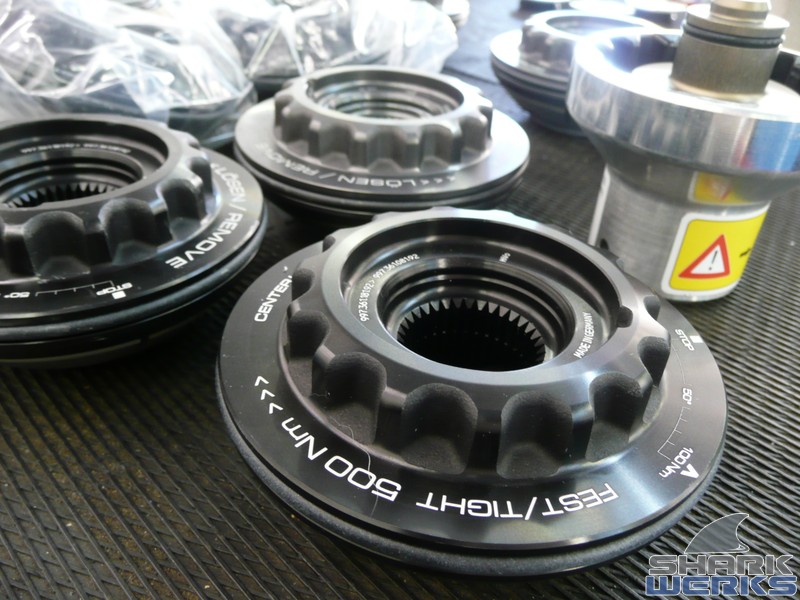
For wheels - we typically do not recommend upgrading them for weight savings. It's a small number and an expensive proposition. If you prefer the look of an aftermarket wheel, we offer several lighter-weight forged options.
Here are some of our favorites over the years:
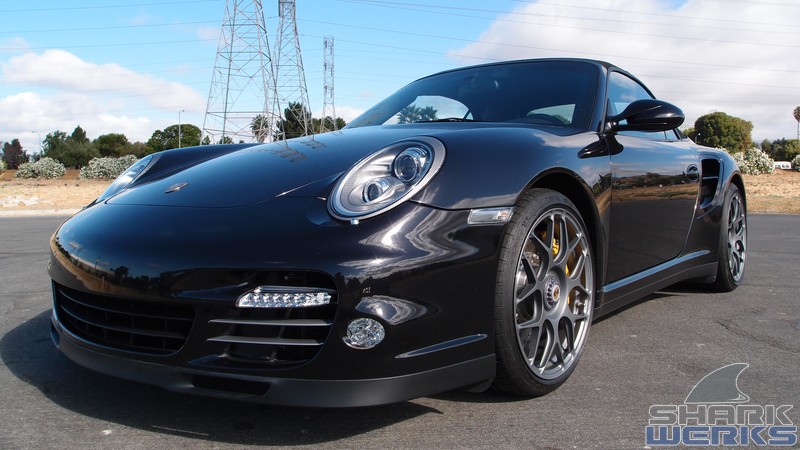
HRE P40S
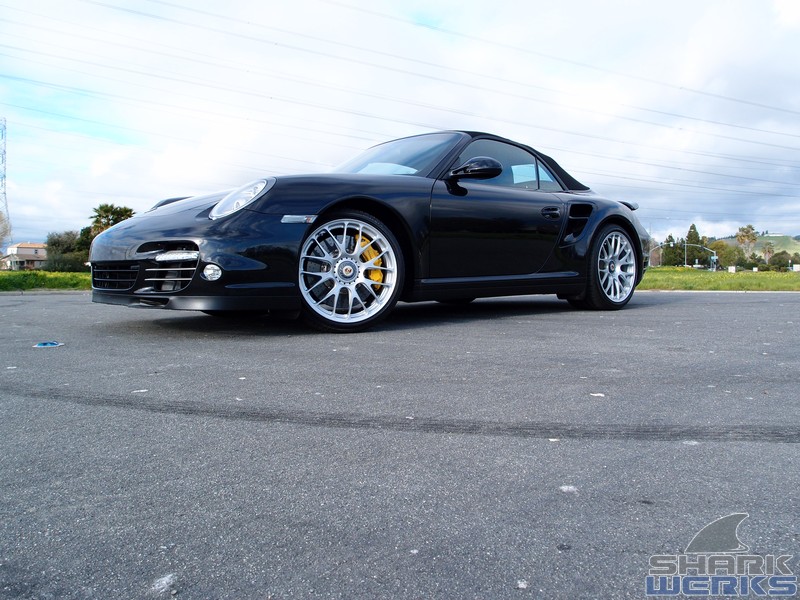
Champion RS20
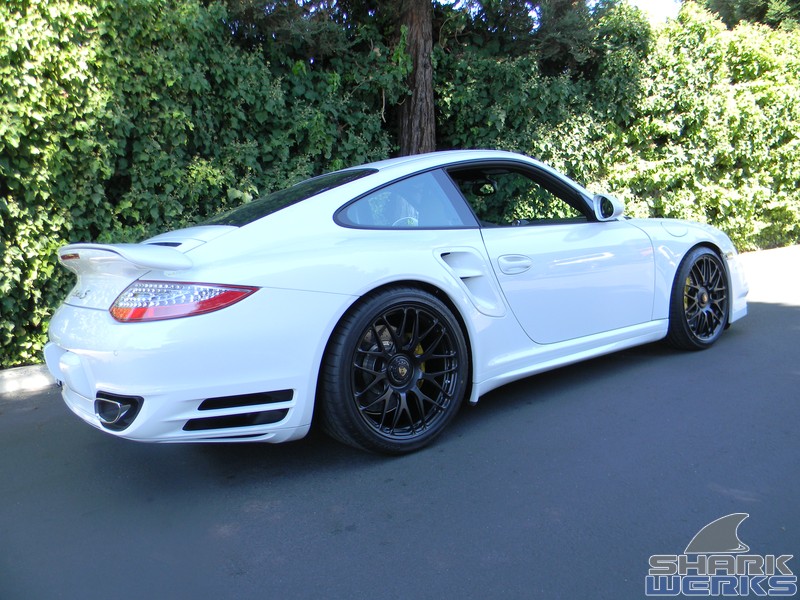
HRE CL40
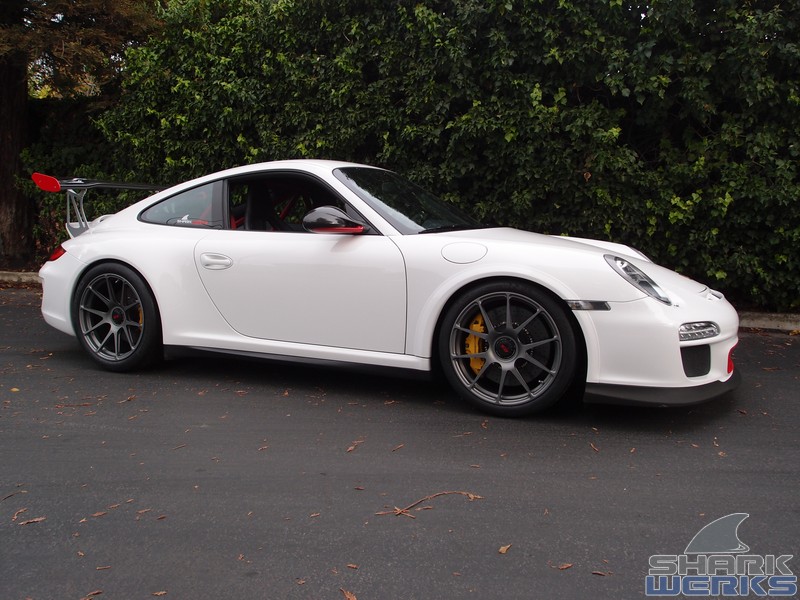
Forgeline GA1R (shown on GT3RS)
Some of these may no longer be available, but similar versions can be found.
The more track-minded you are, the more likely you will end up with a second set of wheels. To help make it easier / safer / faster to change wheels we like to use the High Strength Manganese Boron Steel RSS Wheel Stud kit to replace the lug nuts. A longer 90mm kit is also available (for NON centerlock option cars only). One set for the track and one for the street. For those of us that drive the cars daily and/or in the rain, one set could be outfitted with a non R-compound tire such as the Michelin Pilot Sport 4S. It tends to last longer as the tread-wear rating is considerably friendlier.
Just say no to 20s. Get that idea out of your head. It won't look good. It won't ride well. The geometry and suspension was never set up for that sizing and we never put wheels larger than 19-inch diameter on the 997.2.
Brakes
Got steel brakes? Brilliant. They've been upgraded to pseudo two-piece rotors. Got PCCB's? Also bully for you (albeit with a slight twist). Trying to improve upon the factory system is like trying to take a top tier MMA fighter aside and saying, "I really like what you got and I need you to go more than 5 rounds". It's not something that's really necessary, nor is it easy to do. The factory brakes are world-class, make no bones about it. If you've come from any other Porsche wait till you put your foot into these -- especially PCCB's.
For a pure street car the PCCB's should be left alone. It's just not something one really needs to tamper with unless you're using the car extensively at the track. For steel brakes, you can certainly try running more aggressive pads but be prepared to change rotors (and induce even more noise) more frequently. When it does come time to change rotors a firm favorite is the two piece GiroDisc rotors (http://www.sharkwerks.com/products.php?pid=194) which are not only a few pounds lighter but have better cooling properties thanks to their slotted design and an aluminum hat which you re-use.
Tracking with PCCB's
It's generally not a great idea to use the PCCB's if you plan to track more than a few times a year or at medium/higher skill level. The rotors will simply not last long enough to be economically viable. Sadly that $8800 option is usually replaced with a $5000 two-piece steel rotor set up that we provide our track customers from Brembo.
Their Type III rotor kit (front: http://www.sharkwerks.com/products.php?pid=199 / rear: http://www.sharkwerks.com/products.php?pid=360) allows you to re-use those same yellow calipers in the front and rear but with 72-vein rotors (double that of standard) and intricate slots they've managed to survive well into a season even on higher HP turbocharged GT2 cars... let alone GT3s. A superb option/alternative and the only draw back is the use of a narrow annulus brake pad in the front. Because you're no longer afraid of destroying your PCCB rotors you can opt for more aggressive brake pad combinations and replace just the outer rotors (retaining the aluminum hats) when needed for a much cheaper price than ceramic. In the field, this set up has been used for One Lap of America on GT3RS', Club Racing with 3.9s and general Driver's Education events with great success. Your hand brake still works, unlike some other brake kits. A cheaper alternative is the 380mm Girodisc which we also offer.
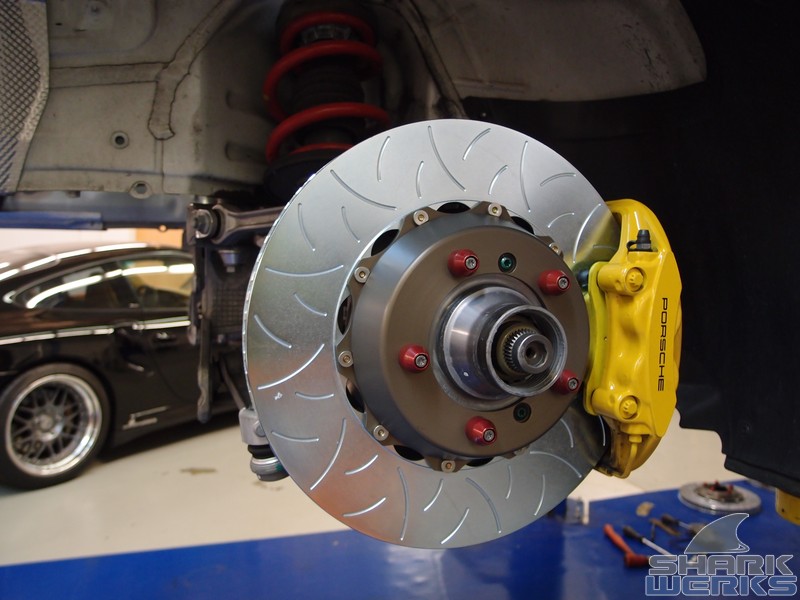
Track Safety and Interior
The 997.2 Turbo would make a spectacular track car if it wasn't so darn good at being a street car.
That isn't to say "Don't track your Turbo"... by all means, give it a shot! But the added weight, all wheel drive, and comforts that make it such a great street car, all add complexity and result in more consumables (tires/brakes) and less fun overall. The engine and transmission are not really deisgned to be wide open throttle for 20-minutes at a time, and with the incredible power the car has, it also is very hard on brakes and tires from this added speed (doubling your issues).
The first thing to remedy if you do end up tracking the car more than a few times would be the seats. Adding GT2 Seats (from a 2008 GT2) or the Sport seat from 2007-2012 GT3 and RS, will help a lot to make this car feel more at home on a track car. Sometimes you can find a good deal on these used, on sites like Craigslist or Rennlist.
With that, you should add a harness bar such as the unit from RSS here, and 6-point harnesses for track safety.
As long as you're up to date on maintenance, you may have great luck with this car on a track. We'd love to hear our experiences!
Transmission
The transmission for these vehicles comes in two flavors: PDK and 6-speed Manual.
The PDK is obviously lightning quick and very reliable. We prefer to keep it that way: while some companies offer upgraded PDKs (for ultra high power levels) or software tuning to modify the shift points, we think it's tinkering with trouble. The original transmission works fine with 600 HP, and going beyond that is exponentially more risky and expensive. We do not sell upgrades for the shifting speed or durability of this transmission.
For the much more rare manual transmission, we do not recommend any changes to the clutch, flywheel, or gearing. It's ideal from the factory and the stock clutch can take the power limits of the transmission and engine. If you must go beyond 650 HP, you may need to seek out your own solutions. If you are just tuning the ECU or something similar for performance, a stock clutch is preferred. The car does not see the same benefits from upgrading the flywheel that you may see on a non-turbo car.
Recommendations
SharkWerks Recommends (for Street Use)
- Shark Werks Sport Exhaust for 997.2 Turbo
- BMC Air Filters
- EVOMSit Software Tuning
- RSS Adjustable rear links- RSS Toe-steer kit & locking plates
- H&R Adjustable Front and Rear Sway Bars
SharkWerks Recommends (for Track Use)
- All of the Above plus...
- Steel brakes (if tracking regularly and using PCCB brakes)
- Harness bar & safety harnesses
- Control Arms*
- Performance Alignment*
- R Compound Tires and Spare Wheels
- Zinc-based racing oil such as Mobil 1 Synthetic Racing Oil
* If you track extensively, you should consider a more aggressive alignment and control arms for the camber adjustment.
Items we would NOT recommend changing
- Intake or airbox
- Headers / Catalytic converters
- Diverter Valves
- Transmission software or mounts
Recommended Forums & Links
Rennlist.com - The most active forum for Porsche owners, a wealth of information and especially for track use
